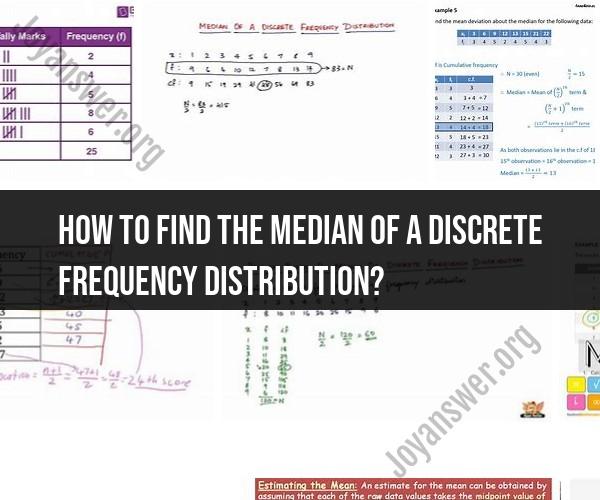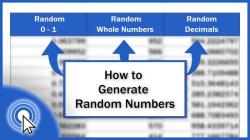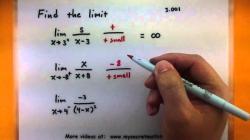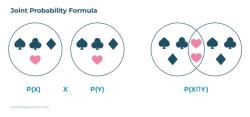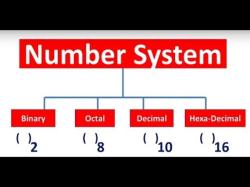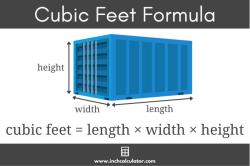How to find the median of a discrete frequency distribution?
To find the median of a discrete frequency distribution, you can follow these steps:
Organize the Data:
- Start by organizing the data in the frequency distribution. You should have two columns: one for the data values and another for their corresponding frequencies (how many times each value occurs).
Calculate the Cumulative Frequencies:
- Add up the frequencies as you go down the list. Create a third column for cumulative frequencies. This column helps you determine where the median falls.
Identify the Median Class:
- Determine the class interval that contains the median. The median class is typically the one where the cumulative frequency just exceeds half of the total frequency (n/2, where n is the total number of data points).
Use the Median Formula:
- The median (Md) can be calculated using the following formula:Md = L + [(n/2 - F) / f] * w
- Md: Median
- L: Lower boundary of the median class
- n: Total number of data points
- F: Cumulative frequency of the class before the median class
- f: Frequency of the median class
- w: Width of the median class interval
- The median (Md) can be calculated using the following formula:Md = L + [(n/2 - F) / f] * w
Calculate the Median:
- Plug the values from step 4 into the formula to calculate the median.
Let's break down the steps with an example:
Suppose you have the following discrete frequency distribution for exam scores:
| Score | Frequency |
|---|---|
| 70 | 4 |
| 75 | 8 |
| 80 | 12 |
| 85 | 10 |
| 90 | 6 |
Organize the data.
Calculate the cumulative frequencies:
- Cumulative Frequency for 70: 4
- Cumulative Frequency for 75: 4 + 8 = 12
- Cumulative Frequency for 80: 12 + 12 = 24
- Cumulative Frequency for 85: 24 + 10 = 34
- Cumulative Frequency for 90: 34 + 6 = 40
Identify the median class: The median class is the one where the cumulative frequency just exceeds half of the total frequency. In this case, that's the class with a cumulative frequency of 12, which corresponds to the score 75.
Use the median formula:
- L (Lower boundary of the median class) = 75
- n (Total number of data points) = 40
- F (Cumulative frequency of the class before the median class) = 4
- f (Frequency of the median class) = 8
- w (Width of the median class interval) = 5 (80 - 75)
Calculate the median:
- Md = 75 + [(40/2 - 4) / 8] * 5
- Md = 75 + [(20 - 4) / 8] * 5
- Md = 75 + (16 / 8) * 5
- Md = 75 + 10
- Md = 85
So, the median exam score is 85.
To compute the median for discrete frequency distributions, you can follow these steps:
- Arrange the data in ascending or descending order.
- Find the cumulative frequency. This is done by adding the frequencies of all values up to and including the current value.
- Find the median. The median is the middle value of the cumulative frequency distribution. If the cumulative frequency is even, the median is the average of the two middle values.
Here is an example:
Data: 2, 4, 4, 5, 6, 7, 8, 9, 10
Frequency: 2, 1, 2, 1, 1, 1, 1, 1, 1
Cumulative frequency: 2, 3, 5, 6, 7, 8, 9, 10, 11
The median is the 6th value of the cumulative frequency distribution. Therefore, the median is 6.
If the cumulative frequency is odd, the median is the middle value.
Here is an example:
Data: 2, 4, 4, 5, 6, 7, 8, 9
Frequency: 1, 1, 2, 1, 1, 1, 1, 1
Cumulative frequency: 1, 2, 4, 5, 6, 7, 8, 9
The median is the 5th value of the cumulative frequency distribution. Therefore, the median is 5.
The median is a useful measure of central tendency for discrete frequency distributions. It is less affected by outliers than the mean and is easier to calculate.
